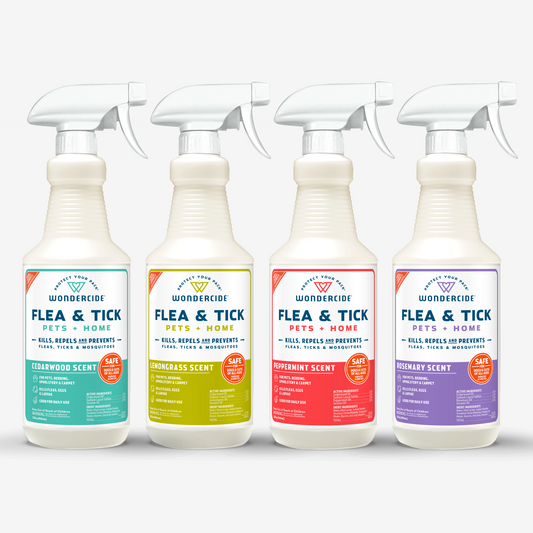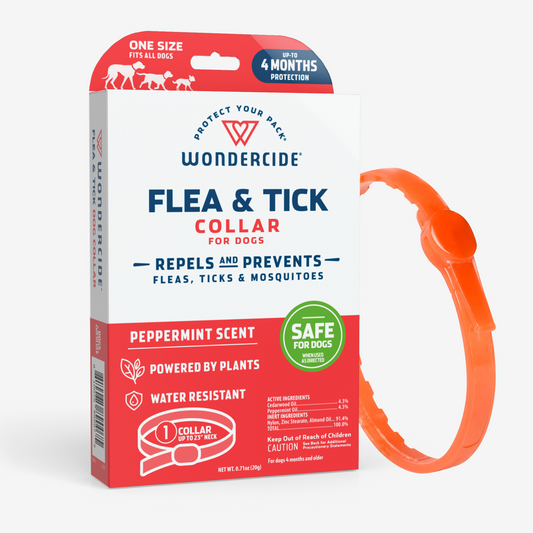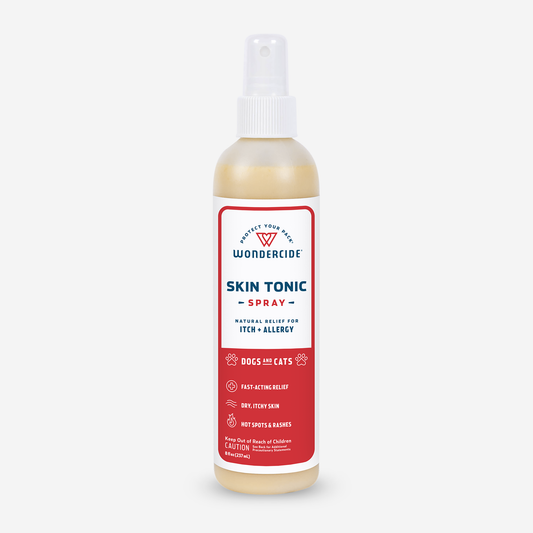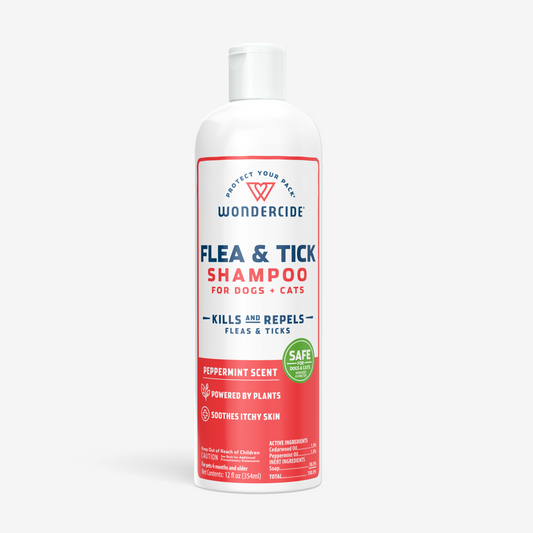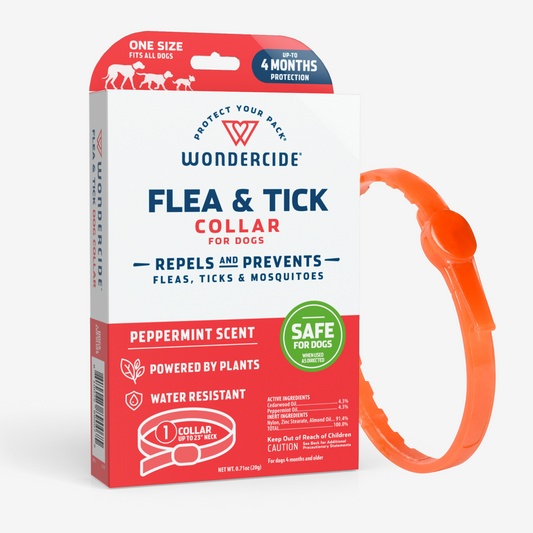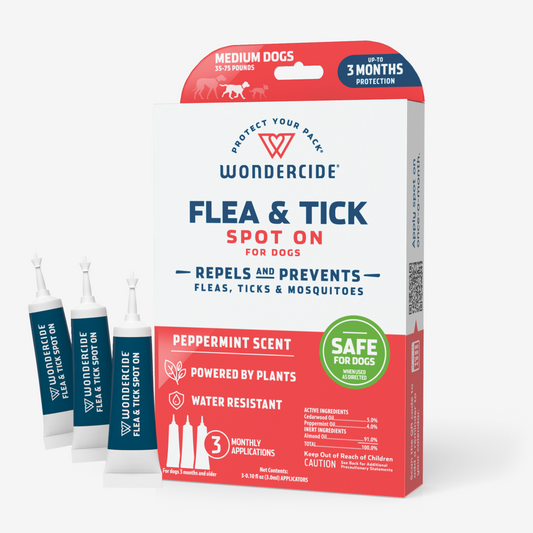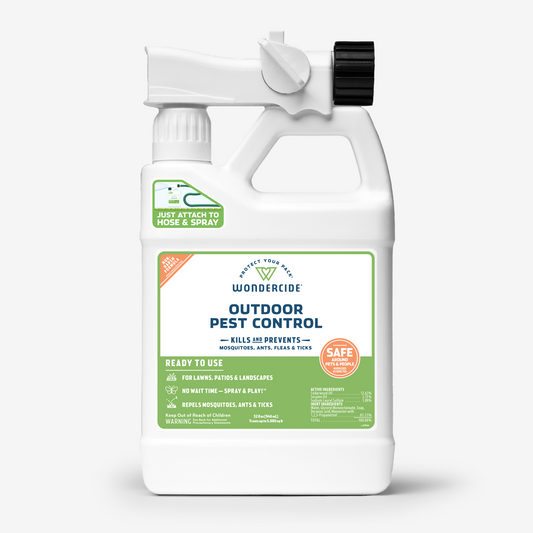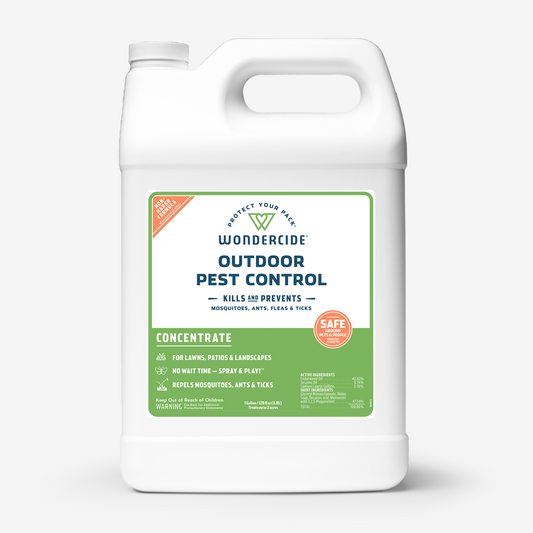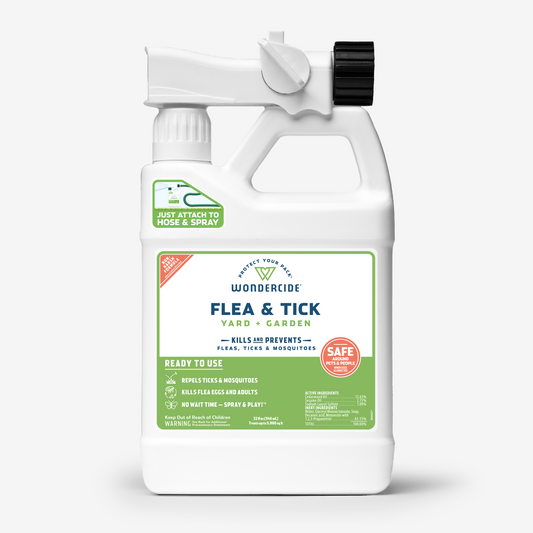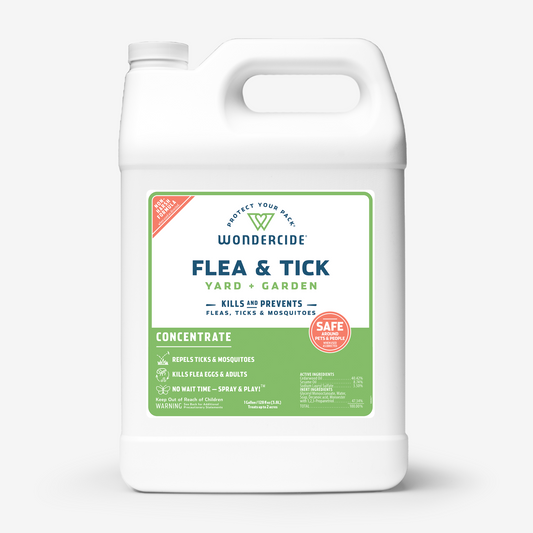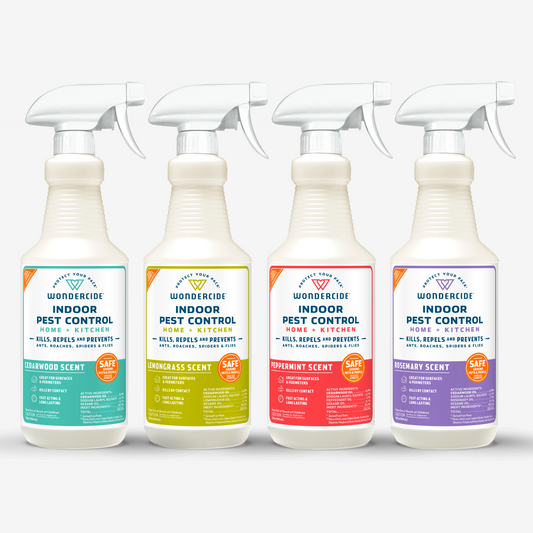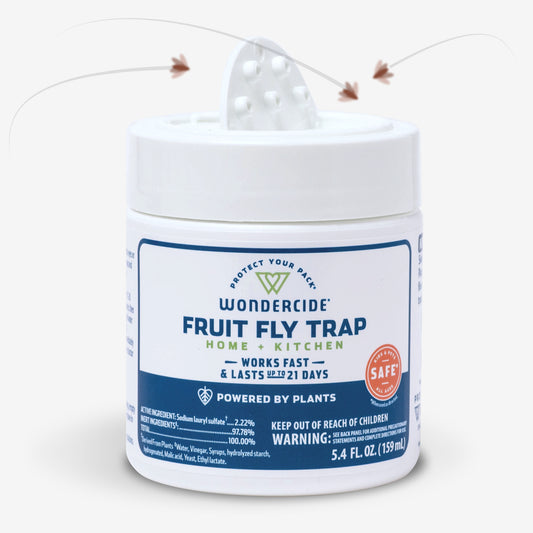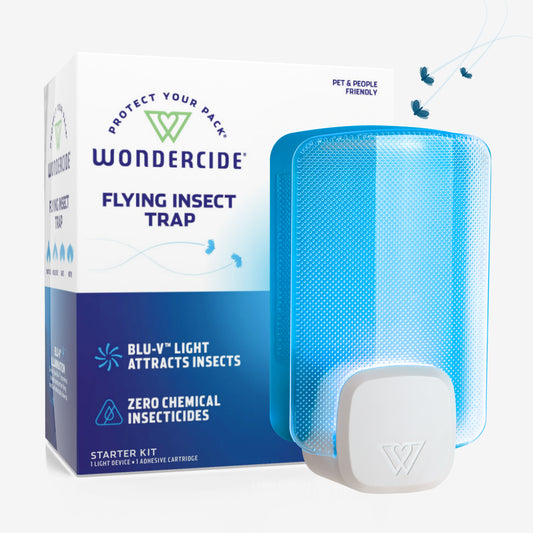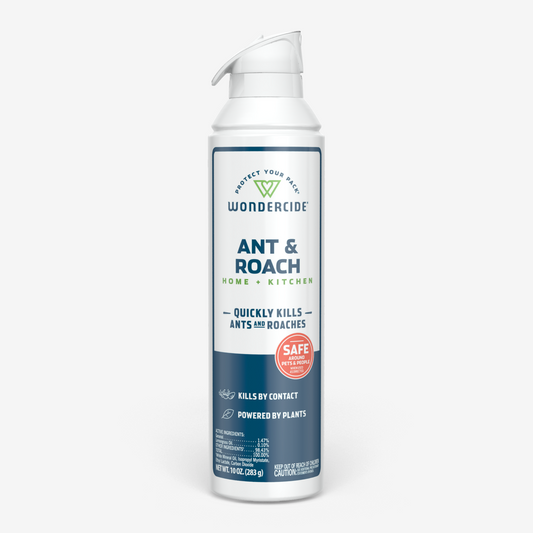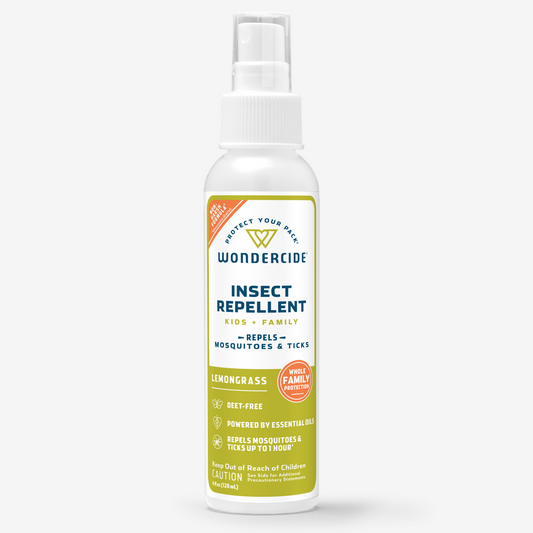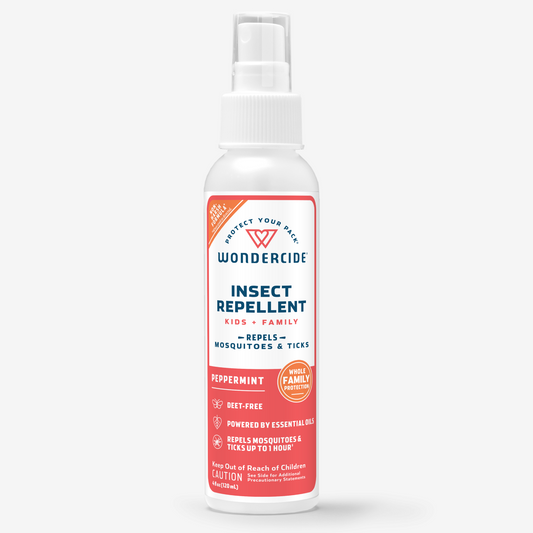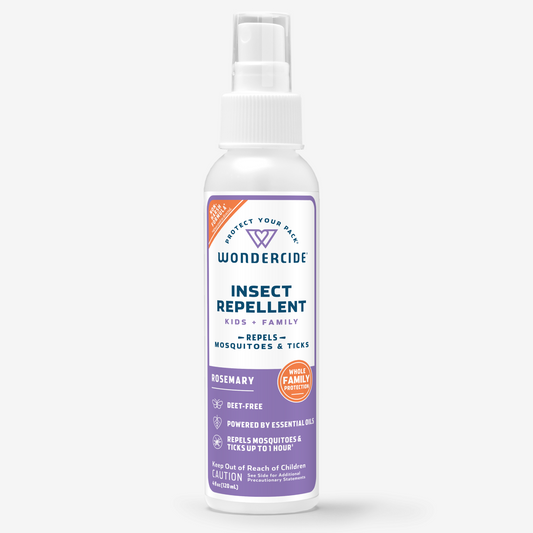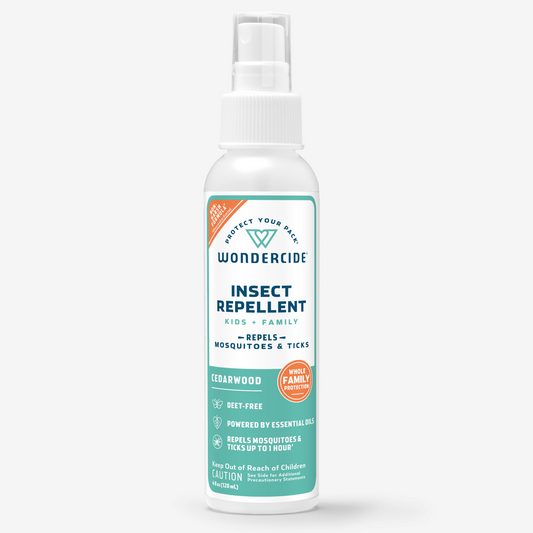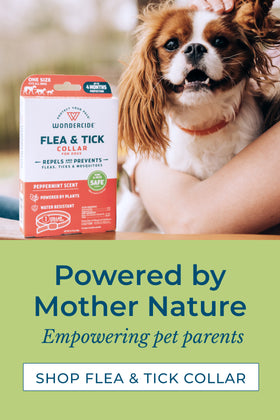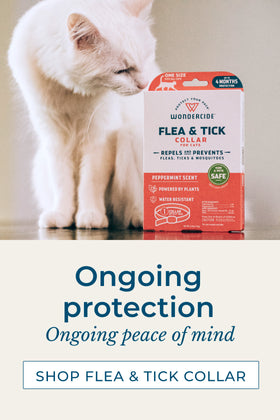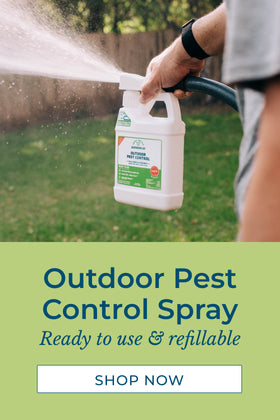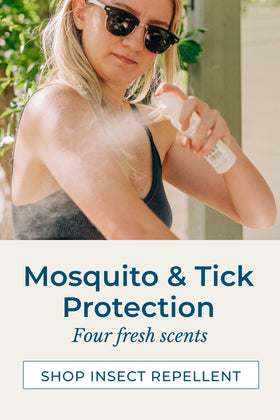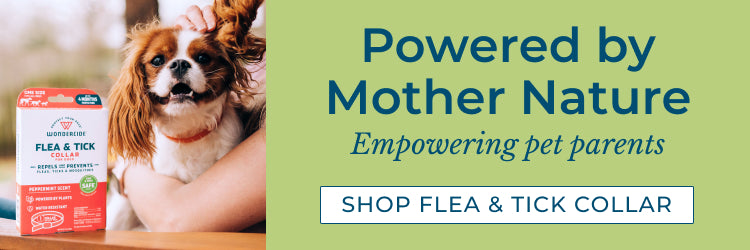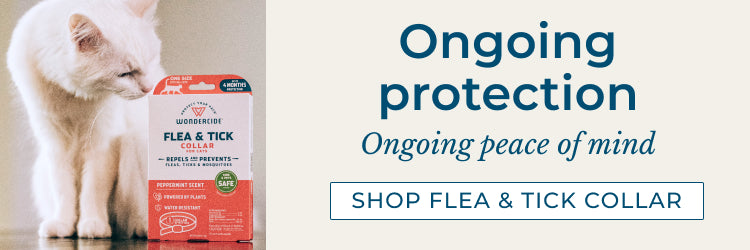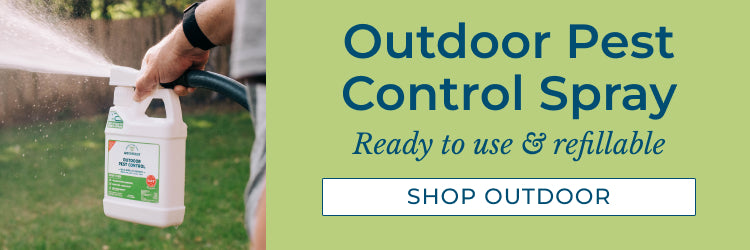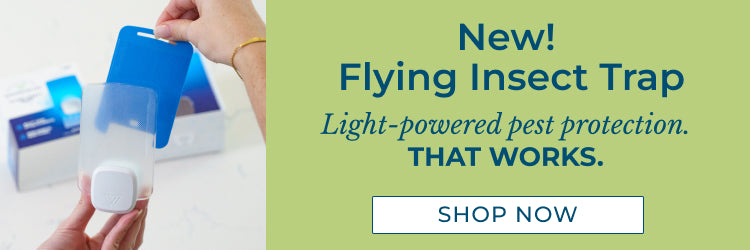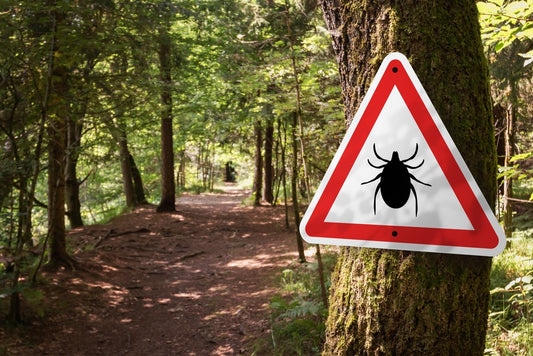What you need to know about how to get rid of fleas
Pets love the great outdoors and, as it so happens, so do fleas! Knowing how to get rid of fleas is going to be an essential part of taking care of your four-legged friend.
Fleas look like black or dark brown specks that are about 1-3 mm long: just big enough to be visible to the naked eye. These parasites are wingless and they can jump up to seven feet to attach to a host, whose blood they then ingest. Gross! They are most common in hot, humid areas. In fact, if you live in an area where the temperature stays above freezing most of the year, you may even have a problem with fleas in winter.
Pet fur is the perfect place for fleas to hide and lay their eggs. Humans can also pick fleas up in their shoes or on their clothing after being in nature or around other animals. Regardless of how they appear in your environment, you should act quickly to kill the fleas and prevent future infestations.
Why is it important to get rid of fleas quickly?
If your pet has fleas, your yard and home may have them too. Fleas multiply extremely quickly. In fact, a mating female flea can produce up to 2,000 eggs in her lifetime. These critters can begin biting pets and people within a day of hatching. That’s why it’s important to learn how to kill fleas fast.
Quick action is especially important for the health of your pets. Timely flea control can reduce the amount of time your furry friends are itchy and uncomfortable. It also reduces the chances that they will suffer health complications.
How to get rid of fleas on your pets
If you notice your pet scratching more than usual, it is a smart idea to check for fleas. To do this, you have a couple of options:
- Use a flea comb to check their fur, especially on their neck, belly and tail. Have a bowl of hot soapy water nearby to dunk and kill any fleas or eggs you find.
- Rub your pet (or their bedding) with a wet white cloth. This may reveal flea dirt: flea waste that resembles tiny bloody or black specks.
- If you’re still not sure if your pet has fleas, consult with your veterinarian.
You found fleas. OK! You’ve got this – and you’ve got options.
Flea spray for pets
Flea Shampoo
If your pet tolerates baths, remove fleas with a shampoo powered by plant-based ingredients. Wondercide’s Flea and Tick Shampoo uses cedarwood and peppermint essential oils as active ingredients to fight fleas. It effectively kills and helps repel fleas on dogs and cats that are 4+ months old.
Flea Collars
For lasting flea repellency, consider a flea-and-tick collar for your dog or cat. Wondercide’s Flea and Tick Collars are designed for pets that are 4+ months old. They are proven to repel and help prevent fleas and ticks with the power of essential oils.

Other Options
Your vet may also recommend topical prescription or oral medication. As your pack’s protector, ask questions about the ingredients and how the products work so you can be informed. An open dialogue with your vet and added reassurance is a good thing.
FAQ: Does shaving your pet help stop a flea infestation?
No, shaving your dog or cat will not help stop a flea infestation. It may be easier to spot fleas on a pet that has been shaved, but shaving alone will not solve a flea problem. The idea that shaving your pet will stop fleas is a myth.
How to get rid of fleas in your yard
When your dog or cat has fleas, treat your yard if you have one. Fleas are pervasive and get everywhere. Plus, pets and people can bring in more fleas from the yard and re-start an infestation. Here are smart yard tips:
- Mow your lawn regularly. Fleas love to hide in tall grass, so be sure to mow and rake your yard frequently. Bag your clippings and dispose of them in a closed bin instead of adding them to your compost pile.
- Keep your yard tidy. Exposing as much of your yard and garden to sunlight as possible is a great method of flea prevention. Clear away yard debris regularly so fleas have fewer places to hide.
- Avoid overwatering. Overwatering isn’t just bad for plants: it also creates humid conditions that will attract fleas.
- Discourage wildlife that carry fleas, like squirrels, possums, and mice, from visiting your yard. Explore humane ways to rid them from your property, like barriers, lights, and noisemakers.
- Use a flea spray for your yard. Wondercide Flea and Tick Spray for Yard + Garden kills, repels and prevents adult fleas and kills flea eggs, too. Spray your whole yard twice within a week or so to get your infestation under control, then treat as needed to maintain results. The residue from Wondercide yard sprays is safe for pets, people and pollinators, plus there’s no dry time needed before play time starts again.
How to get rid of fleas in your house
Fleas love to lurk in pet beds, blankets, carpets, mattresses, and furniture just as much as they love tall grass. If you have fleas on your pets, fleas are in your home.
- Treat the whole house. With Flea & Tick Pets + Home, do at least one whole-house treatment and spot treat favorited areas such as bedding.
- Wash and dry all bedding—especially your pet’s—every other day. Wash bedding with hot water and soap, and dry it on your dryer’s highest setting. If your infestation is very severe, it may be best to buy new bedding for the whole family.
- Vacuum your carpets, mattresses, and furniture. Concentrate on cracks and crannies where eggs, larvae and pupae can hide. If possible, use a vacuum that allows you to dispose of its contents without coming into contact with them. Dispose of the waste outside your home in a closed container.
- Steam clean your carpets, furniture, pet beds and toys. Heat and soap kills fleas at all stages of their life cycle.
Additional things to consider when getting rid of fleas
The flea life cycle
To get rid of fleas effectively, you have to take into account getting rid of them at the various stages of the flea life cycle. Sometimes a little persistence is key so keep at it and you’ll find success.
- Eggs. Flea eggs are just barely visible to the naked eye. They’re white or light-colored and smooth. You may spot them in your pet’s fur, in your carpet, or in tall grass.
- Larvae. Fleas hatch from their eggs after 2-7 days and then enter a larval stage for about a week before weaving a cocoon. Flea larvae feed on flea dirt, or flea waste.
- Pupae. During the pupal stage, fleas enter a cocoon. This stage may last only a week or two if the weather is warm, but pupae can go dormant for months if conditions aren’t right for their emergence. This is one reason why flea infestations may come roaring back even after you’ve carefully treated them.
- Adults. Adult fleas can live up to 100 days. They can begin to feed within ten seconds of landing on a host and may remain on their host for up to two months.
Do fleas bite people?
Yes, fleas do bite people. Though they prefer creatures with fur, they’ll feed on any organism with blood.
On humans, flea bites typically appear as a cluster or line of 3-4 small, red bumps. They do not swell like mosquito bites do, but they may have a similar red “halo” around them. Fleas tend to bite people on their ankles or legs or in warm, protected areas like the armpits, groin, elbow, or knee.
In addition to being uncomfortable, they can cause a mild allergic reaction for some people. If you notice that you are developing a rash or white blisters around a flea bite, see a doctor.
How long does it take to get rid of fleas?
There is no easy answer to this question. Fleas are crafty and prolific. A mating female flea can lay up to 20 eggs per day! To really stop a flea infestation in its tracks, treat the problem early and thoroughly. Persistence is key and with the right approach, you’ll get rid of them in short order.
Get rid of fleas without the use of conventional ingredients
Flea infestations can be frustrating and tricky to resolve. Wondercide will let you get rid of your flea issue while harnessing the power of nature to do the job.
Ready to get rid of fleas for good? Bundle and save on Wondercide’s most popular flea-fighting products! There’s a bundle for every home and family.
Try our Complete Control Flea and Tick Kit, Pest-Free Pack, Pet Parent Pack, Home Treatment Kit, or Biodefense® Early Treatment Kit.
Check out all of our solutions for your dogs, cats, home, yard, and family today.
More How-To Guides by Wondercide:

